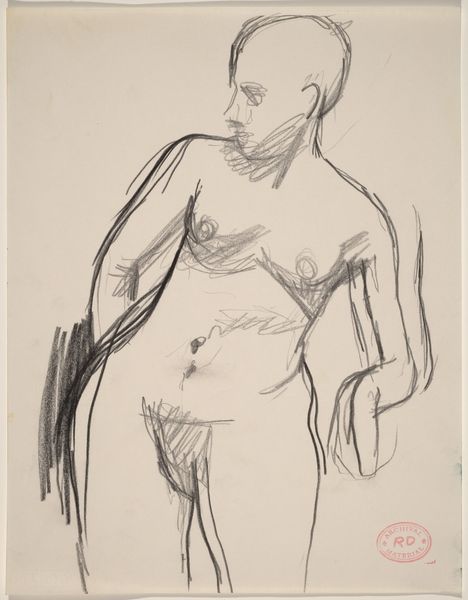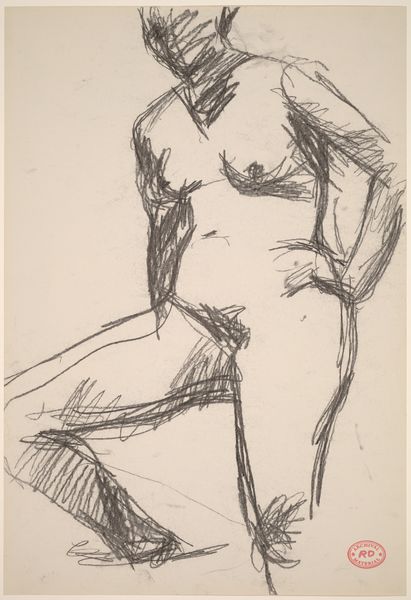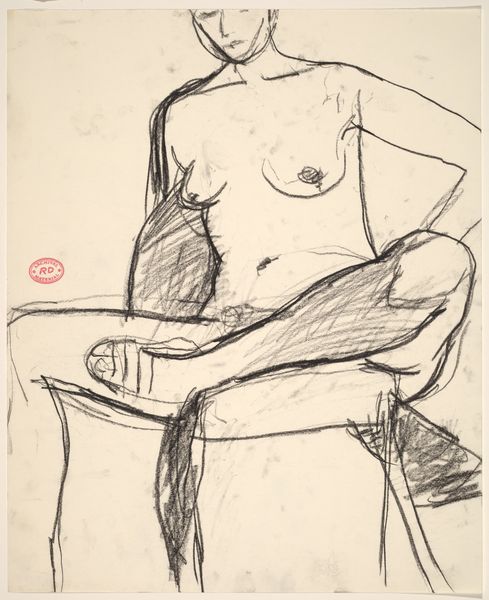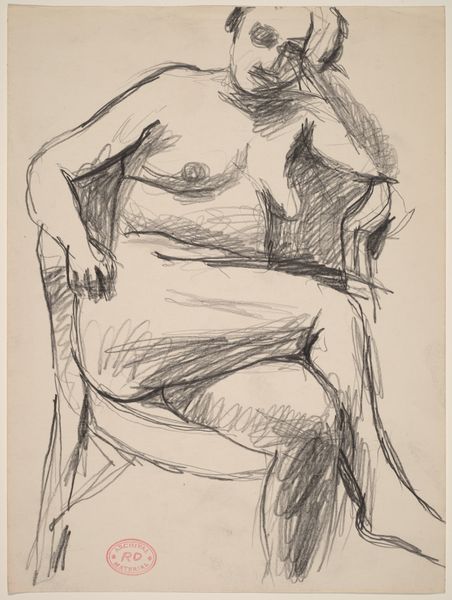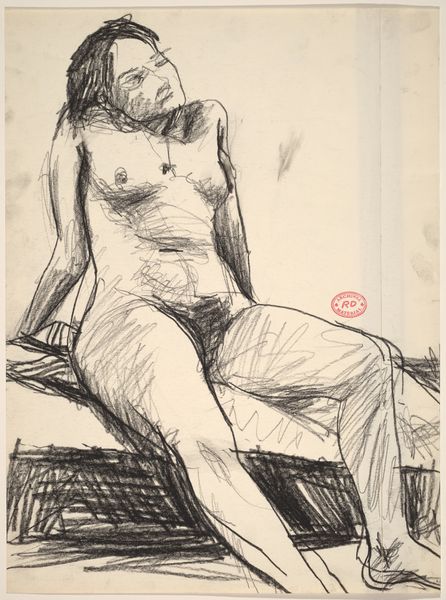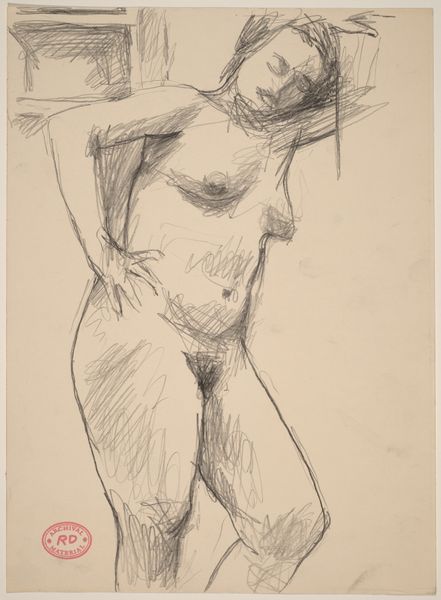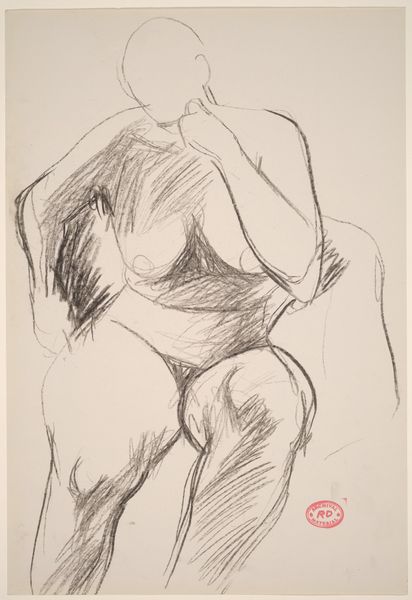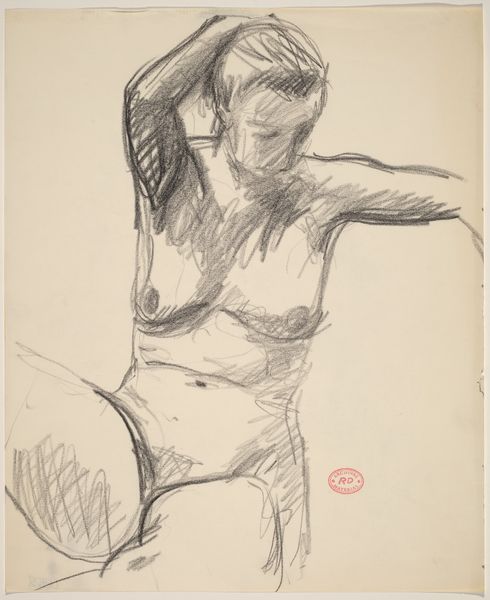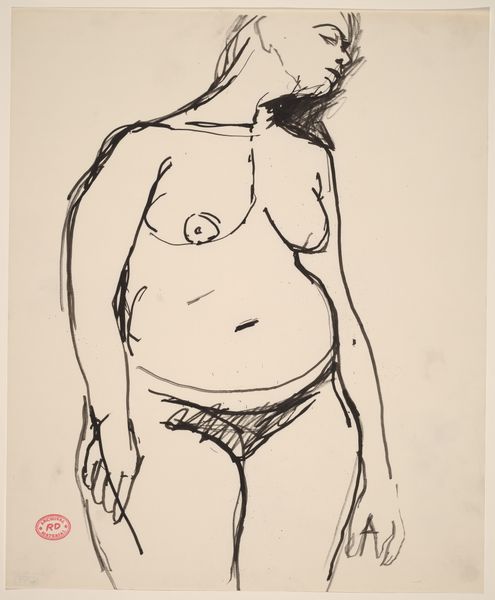![Untitled [seated female nude with right hand to forehead] by Richard Diebenkorn](/_next/image?url=https%3A%2F%2Fd2w8kbdekdi1gv.cloudfront.net%2FeyJidWNrZXQiOiAiYXJ0ZXJhLWltYWdlcy1idWNrZXQiLCAia2V5IjogImFydHdvcmtzLzY4MjM5OWRiLWNmYzMtNDI5Yi1hZTExLWRkNTYxOTJjNmJhZi82ODIzOTlkYi1jZmMzLTQyOWItYWUxMS1kZDU2MTkyYzZiYWZfZnVsbC5qcGciLCAiZWRpdHMiOiB7InJlc2l6ZSI6IHsid2lkdGgiOiAxOTIwLCAiaGVpZ2h0IjogMTkyMCwgImZpdCI6ICJpbnNpZGUifX19&w=3840&q=75)
Untitled [seated female nude with right hand to forehead] 1955 - 1967
0:00
0:00
#
bay-area-figurative-movement
Dimensions: overall: 40.6 x 27.6 cm (16 x 10 7/8 in.)
Copyright: National Gallery of Art: CC0 1.0
Curator: Before us we have Richard Diebenkorn's "Untitled [seated female nude with right hand to forehead]," an ink drawing that dates between 1955 and 1967. Editor: It feels so immediate, almost frantic. The rapid, scratchy lines of ink give the figure a real sense of unease and introspection, as if capturing a fleeting moment of vulnerability. Curator: The pose certainly evokes contemplation, doesn’t it? Her hand obscuring her face could symbolize hidden thoughts, or perhaps the weight of societal expectations. Nudes have carried layers of symbolic meaning for centuries, from idealized beauty to representations of mortality. Editor: Agreed, but there’s also a powerful use of positive and negative space here. See how the blank paper acts as a stark contrast to the density of lines forming the figure? The strategic void actually enhances the feeling of isolation, forcing our eye to engage with the raw simplicity of the composition. Curator: That contrast directs focus to the gestural qualities as well; the ink rendering possesses a graphic immediacy that evokes 20th century existential anxieties so common at the time this was executed. Note how Diebenkorn uses the ink almost to sculpt her posture in emotional distress. Editor: Absolutely. Look at how certain lines are weighted, dark and confident, then abruptly become tentative, fragile. These abrupt changes reflect this very visible push and pull on the picture plane. The texture itself provides clues for its historical reading. Curator: We’re left wondering about her internal state; it's a timeless representation of private reflection that persists, transcending decades after its creation. Editor: Yes. In the end it is less about the 'what' and more about the 'how.' The sum is, remarkably, greater than its swiftly rendered parts.
Comments
No comments
Be the first to comment and join the conversation on the ultimate creative platform.

